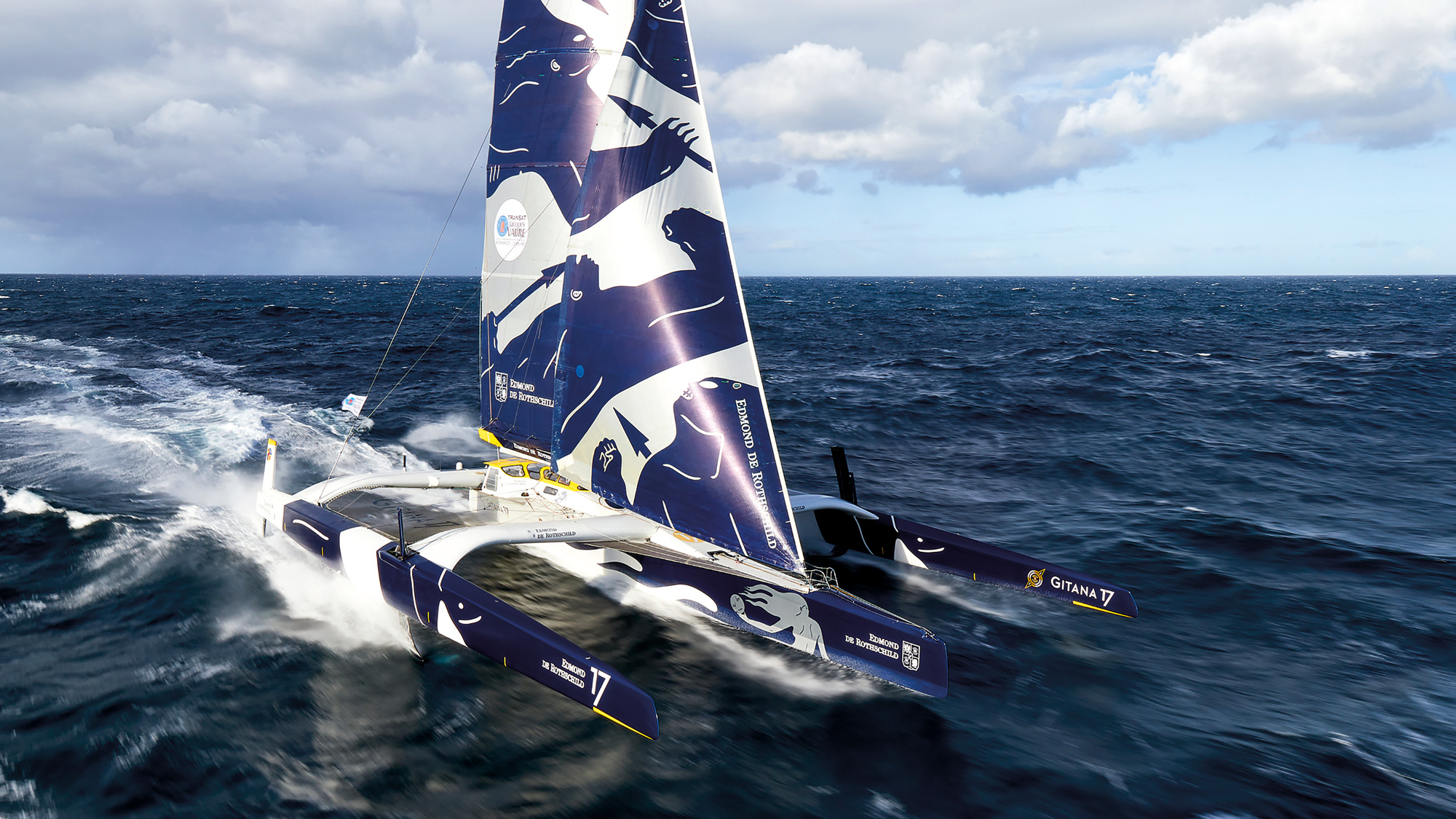Why knowing when to hit the brakes is as important as being comfortable with mind-bending speeds on today’s round the world offshore racers
Among the elite band of rock star offshore racing sailors that do a solo lap of the planet there’s one basic yet counterintuitive rule they swear by: ‘To go fast you have to understand how to go slowly.’
Wherever you look into the history of fast passagemaking, the accounts of those that were seeking to set new records always include frequent references to looking after the boat. And no matter how clunky and old fashioned those boats might look today, in their time they were most likely at the cutting edge of design and materials available.
Being heavy and slow by today’s standards didn’t make them any safer, robust or any less of a challenge when it came to going the distance. Indeed, being hefty and sluggish brought its own problems that modern day skippers of carbon rocket ships don’t have to worry about, not least the inability to sail away from the path of a nasty depression.
The irony is that in the relentless quest to go faster, never has the skill of sailing slowly been more important. The Arkea Ultim Challenge Brest was a fascinating example.
This extraordinary solo non-stop race around the world in 32m trimarans saw five of the six entrants complete the course. This in itself is incredible – few would have given odds on that before the start.
The Ultims are notoriously fragile machines, plus the risk of hitting something in the water and doing serious damage is not measured by chance, but by certainty. (How skippers deal with the constant stress of this is beyond me.)
Article continues below…
Six solo skippers ready to race 100ft foiling multihulls around the world
There are very few ‘firsts’ left in the world of sailing, but one such remaining barrier could be smashed when…
World’s coolest yachts: Gitana 17
“The Ultimes to me are the most technologically advanced and fastest boats that you can still go offshore with, at…
There were staggering average speeds well into the 30s among some of the boats. One skipper reported hitting 47 knots at one point, on foils, alone, and deep offshore.
But for all the impressive speeds across the fleet it was Charles Caudrelier’s regular and obvious slow downs on Maxi Edmond de Rothschild to let weather systems pass in front, like children on a zebra crossing, that I thought were particularly amazing.
On an Ultim knowing how to slow down is one thing, these beasts take off like a scatty race horse at the least provocation, but they need a lot of sea room too and take a while to turn around. As a result, the tactics of pulling in the reins to just 10 knots need to be combined with giving yourself room to manoeuvre while maintaining this ‘pedestrian’ pace.
At one point Caudrelier did stop completely. On his approach up through the Atlantic his ETA had him conflicting with a serious weather system in the Bay of Biscay. His decision was to wait in the Azores.
The ability to stop during this race was one of the big discussion points before the start where some bemoaned the fact that the skippers would be allowed to make pit stops.
This wasn’t in the spirit of a solo non-stop lap of the planet, they said. And perhaps when judged by traditional global laps they’re right. But, the reality is that the machines at the leading edge of offshore design are now too quick for the weather. It’s an incredible position to be in. Continuing into serious weather would be asking for trouble.

Photo: IMOCA / TR Racing
Yet, before we go blaming the Ultims for spoiling the art of solo global racing, it looks like the IMOCA 60s are heading in a similar direction.
A recent study by French sailor and performance expert Olivier Douillard plots the rise in performance of these offshore 60s throughout the last 22 years. His figures, graphs and polar diagrams show how overall performance has increased by almost 50% during this time while the true wind speed to hit 20 knots of boat speed has reduced from 30 knots to just 14.
Over the same 20-year period, reaching speeds have shot up by over 70% with boat speeds leaping from 13 knots to 22 knots with a modern IMOCA on its hydrofoils. It is of course these outrageous scythe-like foils that have been at the heart of the leap in performance.
Originally there to generate more righting moment and to reduce the displacement and wetted surface area, it didn’t take long before the 60-footers were flying. But, even without understanding hydrodynamics it’s easy to see their current limitations. Dragging your stern around like a dog in the park is not quick, or especially comfortable. If and when the class moves to allow T-foils on the rudders, speeds will doubtless shoot up again.
Like it or not, you can’t uninvent the wheel. Boats that sail faster than the weather are already a thing.
 If you enjoyed this….
If you enjoyed this….
Yachting World is the world’s leading magazine for bluewater cruisers and offshore sailors. Every month we have inspirational adventures and practical features to help you realise your sailing dreams.Build your knowledge with a subscription delivered to your door. See our latest offers and save at least 30% off the cover price.






